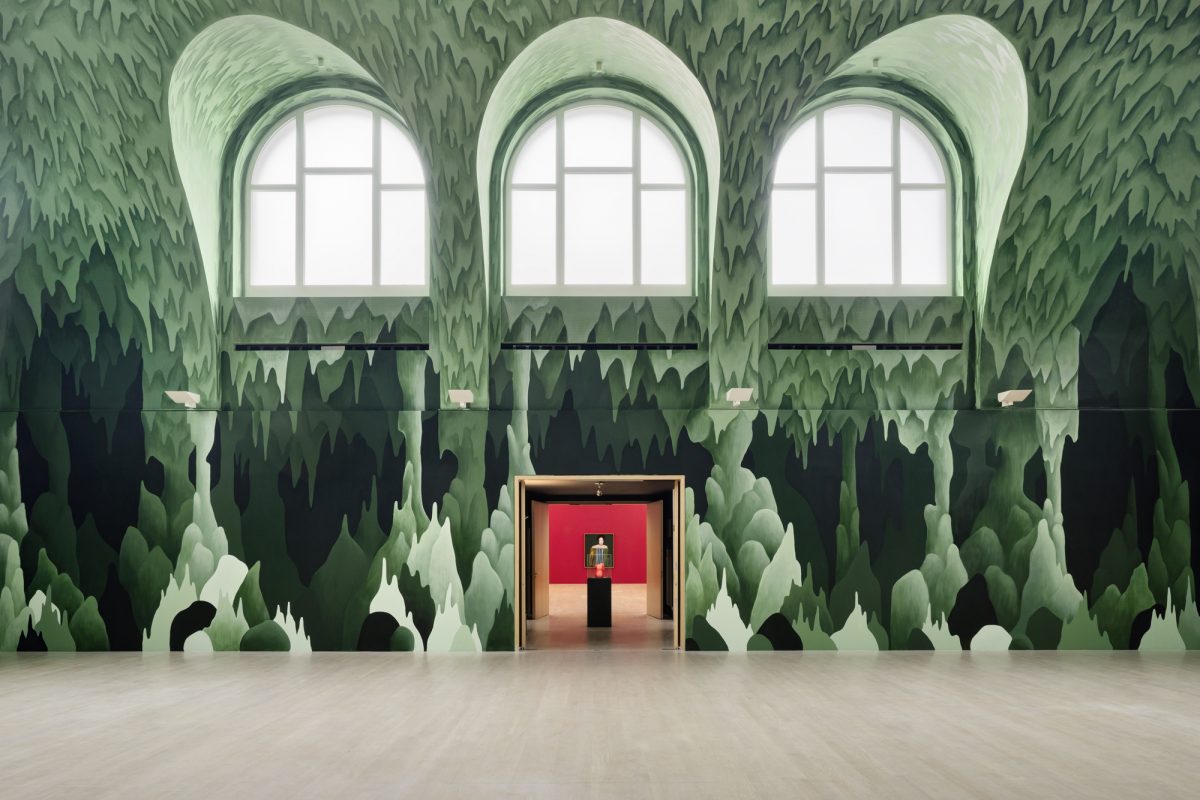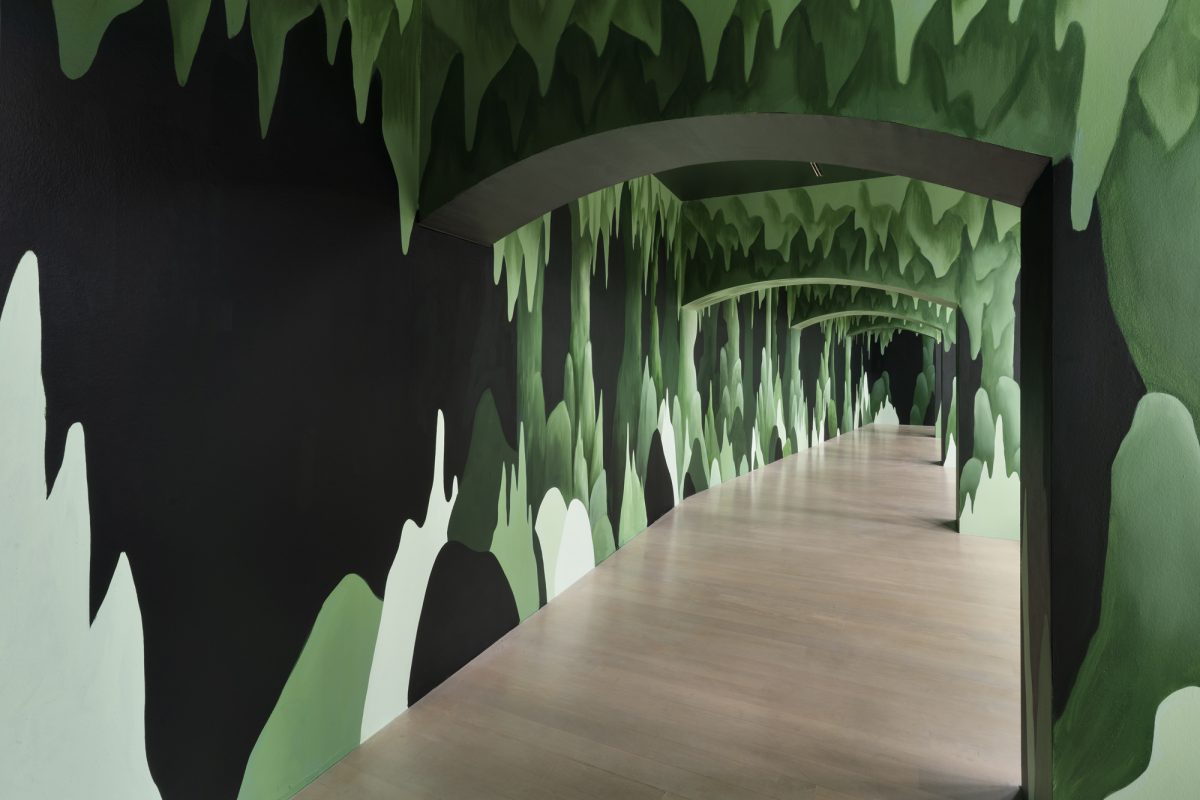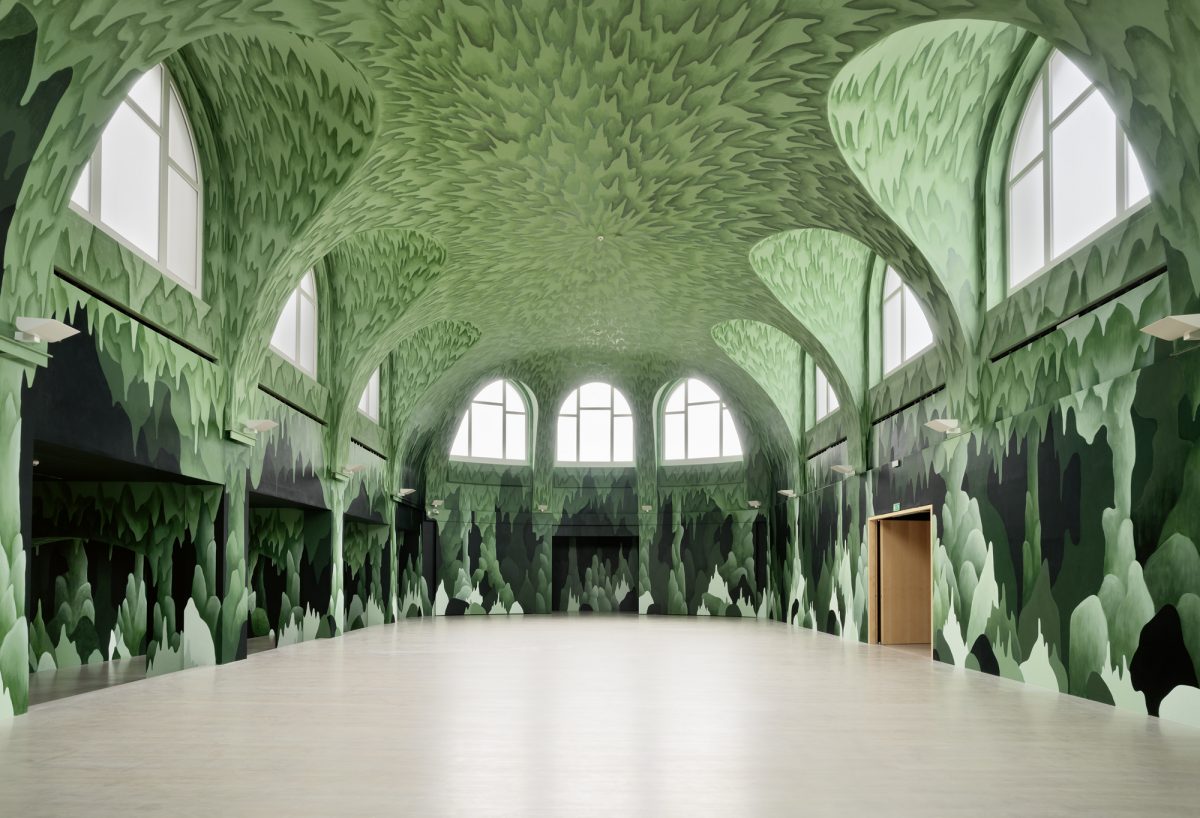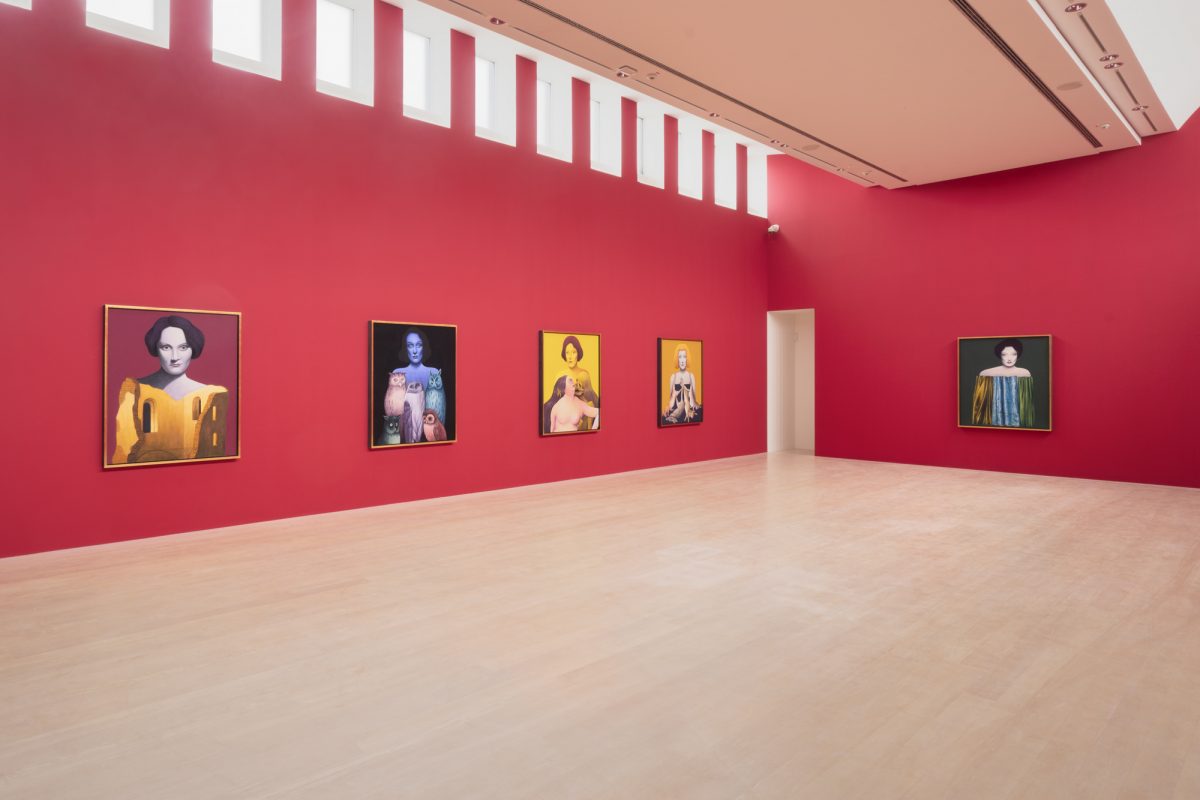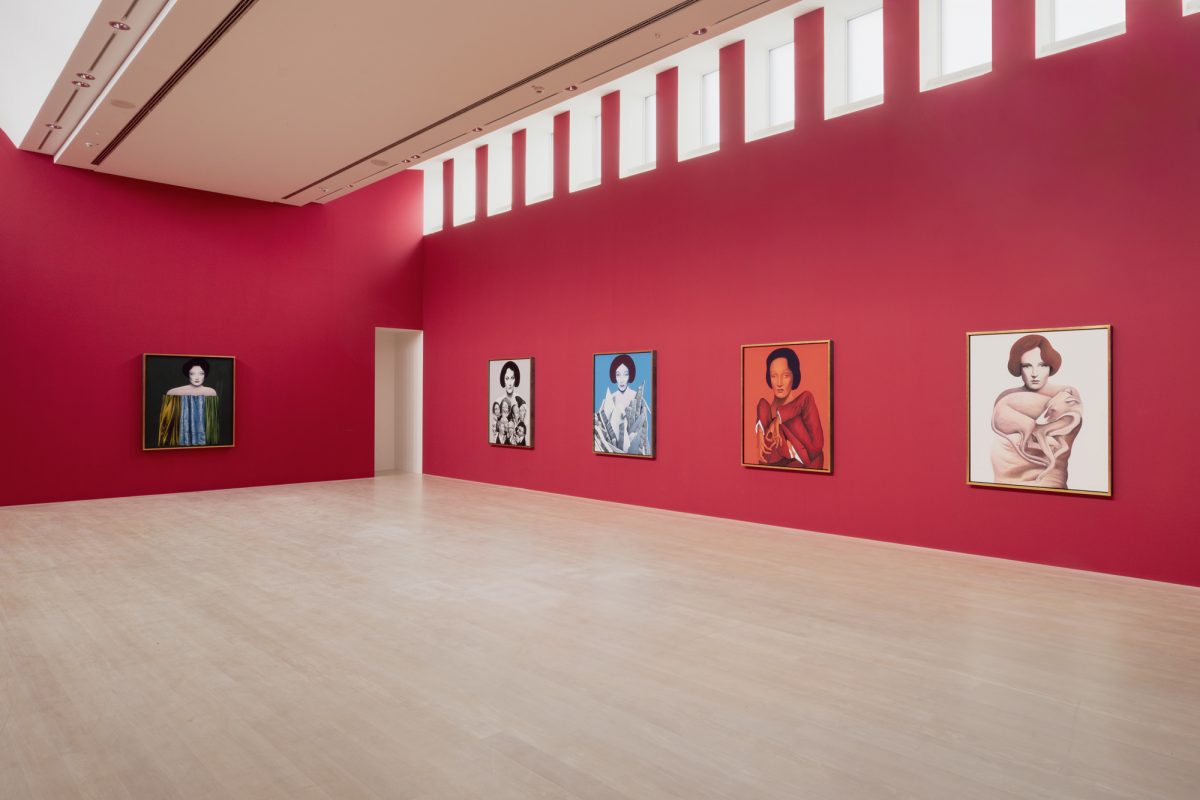
- This event has passed.
Nicolas Party: Stage Fright
The artist Nicolas Party (* 1980 in Lausanne, Switzerland) has created a work that examines painting and its history and reception down to the smallest detail: How is light generated? How do colors or brushstrokes work together? In the exhibition Stage Fright, he will extend his painting across the entire exhibition space with a monumental, site-specific installation: Party will paint the walls and ceiling of the large domed hall and create a spectacular green grotto. His immersive mural refers to countless art-historical predecessors that depict underground caves. At the same time, it becomes a breathtaking and atmospheric spatial experience for visitors. In addition, the Kestner Gesellschaft will present a new series of nine portraits for the first time. The portraits use painting to pose currently relevant questions. Party’s fairytale-like, surreal imagery exists between the poles of likeness and representation, depiction and abstraction, observation and imagination.
Art-historical influences — Nicolas Party’s pictures make their art-historical influences implicitly visible, from medieval art to the Italian pastel painter Rosalba Carriera (1673–1757) to 19th- and 20th-century painters such as Ferdinand Hodler (1853–1918), and René Magritte (1898–1967): “If you decide to paint an apple, you enter into a dialogue with everyone who has ever painted an apple, and there are many,” says Party. These art-historical references can also be found in the subject of the cave: From Giotto’s (1267–1337) frescoes in Assisi to Gustave Courbet’s (1819–1877) The Source of the Loue (1864) to The Grotto of Manacor (ca. 1901) by the Belgian painter William Degouve de Nuncques (1867–1935), depictions of underground caves conjure up a wealth of historical and philosophical connotations. Nicolas Party translates this motif into a holistic spatial concept that was specially developed for the Kestner Gesellschaft.
New Portraits — Nicolas Party’s portraits also show clear references to the history of art. For example, his latest work Portrait with Curtains (2021) is reminiscent of Surrealist paintings by René Magritte, which often include curtains. Party completely dispenses with personality traits, which gives the figures a strangely detached and mask-like appearance. He also leaves the current question of gender categories unanswered.
His most recent portraits include the characteristic face of Marlene Dietrich. Here, too, Party reduces the person to basic elements in order to test the limits of what is still recognizable as “Marlene.” In the 1930s, the actress corresponded to the type of a garçonne, the androgynous female type of the time, and was one of its most famous examples. The artist thus explores the spaces between person and representation, reality and fiction, and fundamentally questions the claim to depict reality.

